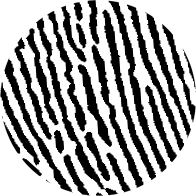Parkour is currently in the process of sportisation : development of institutions outside and above the game ; commodification ; development of compétition ; quantification of performance ; regulation ; standardisation ; creation of artificial places functionally dedicated to parkour, and separated from spaces of everyday life ; abstraction and codification of the corporal skills , development of particular training courses, autonomisation of the game in comparison to the utilitarian roots of the parkour...
This manifesto wants to claim an other parkour. Not necessarily the one from the « origins », but the one which is dear to us, which has transformed our lives and has the potential to transform those of others. The one which is experienced as an alternative to the dominant sports model. The one which appears unique to us. The one which makes us say : parkour is not, and will never become like other sports. And yet...
The purpose is not to rally everyone. But to reaffirm the practice we believe in. Others are free to follow their own path. But can they keep talking of an « urban », « alternative », « non-competitive », « utilitarian » practice ?
Concerning the IGF (International Gymnastics Federation) : they’ve made their choice. The choice of sport, the choice of compétition, the choice of artificial structures. It is not about competing on their territory, but to offer a radical alternative, to defend our core business, to bet on the authenticity of our practice.
What parkour do we fundamentally defend ?
Parkour is learnt and practised outside, on non-dedicated structures, via the reappropriation of structures « which are not meant for this at first », and aim to make a recreational, creative and even subversive use of public space. It is possible to use parkour occasionally on artificial structures but whoever limits his practice to this has missed the essential.
The use of parkour outdoors demands specific skills and knowledge, which are not learnt on artificial structures nor inside. Any person or organisation who boasts about promoting parkour while privileging parkour gyms and parkour parks has to give traceurs the means to practice parkour outside, and if they have learnt inside, to insure their transition outward. The contrary at best does not promote parkour, at worst is totally irresponsible.
Experienced traceurs have a savoir-faire which can not be acquired differently than by practising parkour. Others experts can bring significant contribution in their domains, but they will always miss something to teach parkour. And parkour has to valorise the informal learning process, self-learning and collaborative learning on which it is built too. Traceurs do not need the paternalism of experts, adults and teachers to learn and evolve.
Parkour must be non-competitive, favour altruism and collaboration rather than spectacularizing the confrontation of individuals. Parkour must encourage to progress individually, to have goals of mastery, a desire to learn and develop skills, rather than looking to assert yourself and outmatch others. Parkour must be a community driven and inclusive practice, has to aim for social diversity, rather than becoming a hierarchical and elitist sport. To be utilitarian, parkour must encourage to confront obstacles rather than looking to avoid them, be it physical barriers, unfavourable weather, the public eye or police presence...Parkour must encourage traceurs to respect themselves, to respect others, and to respect their environment. Achieving these goals is not easy, and it requires a true commitment. The means are diverse, it is up to the traceurs to discover them, to develop them and to mobilize them.
Parkour is not a sport. It is a culture including it’s own values, history and bodily techniques; it is a training method, closer to physical education in its dignified meaning than performance sports. Parkour does not need to ape sports and to be admitted by sports institutions. If necessary, some resources can be obtained from sponsors, foundations, aids and backing for cultural activities. At the risk of having to fight a little to make the system adapt to parkour rather than assimilate it.
Formal institutional structures (associations, federations...) have their utility, as far as they have a minimum of democratic functioning, of transparency, of legitimacy and autonomy. But we must not forget that parkour works primarily as a network. Websites, forum, social media, video hosting platforms and others ICT must be mobilised to gather the parkour community. Unlike federal hierarchical structures, this solution allows the free and voluntary membership, a least effort of organisation and workforce management.
If most of these elements are absent, can we still talk of « parkour » ? If so, what distinguishes parkour from other practices, gymnastics or athleticism? Nothing, except the illusion of the difference.
Yann Daout
(This is a translation by Lucas Dassin of the original french manifesto)
